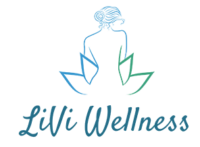The Dangers of Combining a Low-Fat Diet with Strenuous Exercise for Women Over 50
For many women over 50, combining a low-fat diet with intense exercise seems like the ultimate health strategy. It feels like a disciplined, no-nonsense approach to maintaining weight and boosting fitness. But what if this combination is actually putting your health at risk? According to nutrition expert Christine Cronau, the downsides of a low-fat diet become even more pronounced when paired with intense exercise, leading to a range of potential health problems.
In fact, a major 2013 study involving over 7,000 participants had to be abandoned because the risks to the low-fat diet group became too concerning. The study aimed to explore the effects of low-fat diets on cardiovascular health, but the results showed increased markers for cardiovascular issues among those following a low-fat regimen. The risks were so significant that the researchers chose to halt the study early. Let’s dive into why this combination can be particularly problematic for women over 50.
Key Risks of a Low-Fat Diet Combined with Intense Exercise
1. Increased Cortisol and Belly Fat
Strenuous exercise naturally raises cortisol levels, which is your body’s stress hormone. A low-fat diet can make matters worse because it deprives your body of the essential fats needed to buffer that stress. Chronically elevated cortisol levels can lead to increased belly fat-something that is not just an aesthetic issue but a serious health risk. Belly fat is associated with an increased risk of heart disease, insulin resistance, and type 2 diabetes, especially for women over 50.
2. Inadequate Recovery and Muscle Loss
Exercise is vital for maintaining muscle mass, but recovery is just as important. Muscle repair requires healthy fats, and without them, your body may struggle to recover after workouts. Instead of building muscle, you may actually lose it. This is a significant concern for women over 50, as muscle mass is key for maintaining a healthy metabolism, strength, and overall well-being.
3. Low Energy and Fatigue
Fats are an essential, long-lasting energy source. When you reduce fat intake, your body is forced to rely on carbohydrates, which provide short bursts of energy rather than the sustained fuel needed for longer, more intense workouts. The result? Fatigue during and after exercise, which not only impacts performance but also increases the risk of injury and makes it harder for your body to bounce back.
4. Heart Health Risks
The 2013 study published in the American Journal of Epidemiology showed that participants on low-fat diets experienced elevated cholesterol and triglyceride levels. This was largely due to the higher carbohydrate intake that often accompanies low-fat diets. For women over 50, whose cardiovascular health is already under pressure due to hormone changes, this additional stress can be particularly dangerous. Pairing a low-fat diet with intense exercise may put your heart health at risk rather than improving it.
5. Hormonal and Metabolic Imbalance
Healthy fats are crucial for hormone regulation, particularly for estrogen production, which naturally declines during menopause. Without enough dietary fats, hormonal imbalances can worsen, affecting everything from energy levels to mood. Moreover, a low-fat diet can slow down your metabolism, making it more difficult to maintain a healthy weight, even with intense exercise.
The Better Approach for Women Over 50
Instead of cutting fats, it’s time to rethink your approach to nutrition and exercise. For women over 50, gentle exercise can be much more beneficial than strenuous workouts. Activities like walking, yoga, tai chi, and low-impact strength training help improve cardiovascular health, flexibility, and strength without placing undue stress on the body. Gentle exercise also helps regulate cortisol levels, reducing the risk of belly fat accumulation and promoting a sense of well-being. Prioritize healthy fats like avocado, olive oil, nuts, and seeds. These fats provide essential nutrients that support hormone balance, muscle recovery, and cardiovascular health. When combined with gentle, enjoyable forms of exercise-like walking, yoga, tai chi, or light strength training-you can achieve a balanced, sustainable approach to health that works with your body, not against it.
The Takeaway: If you’re a woman over 50, combining a low-fat diet with strenuous exercise may not be the key to optimal health-in fact, it could be doing more harm than good. Instead, focus on nourishing your body with healthy fats and finding an exercise routine that energizes and supports you, rather than depleting your reserves.
